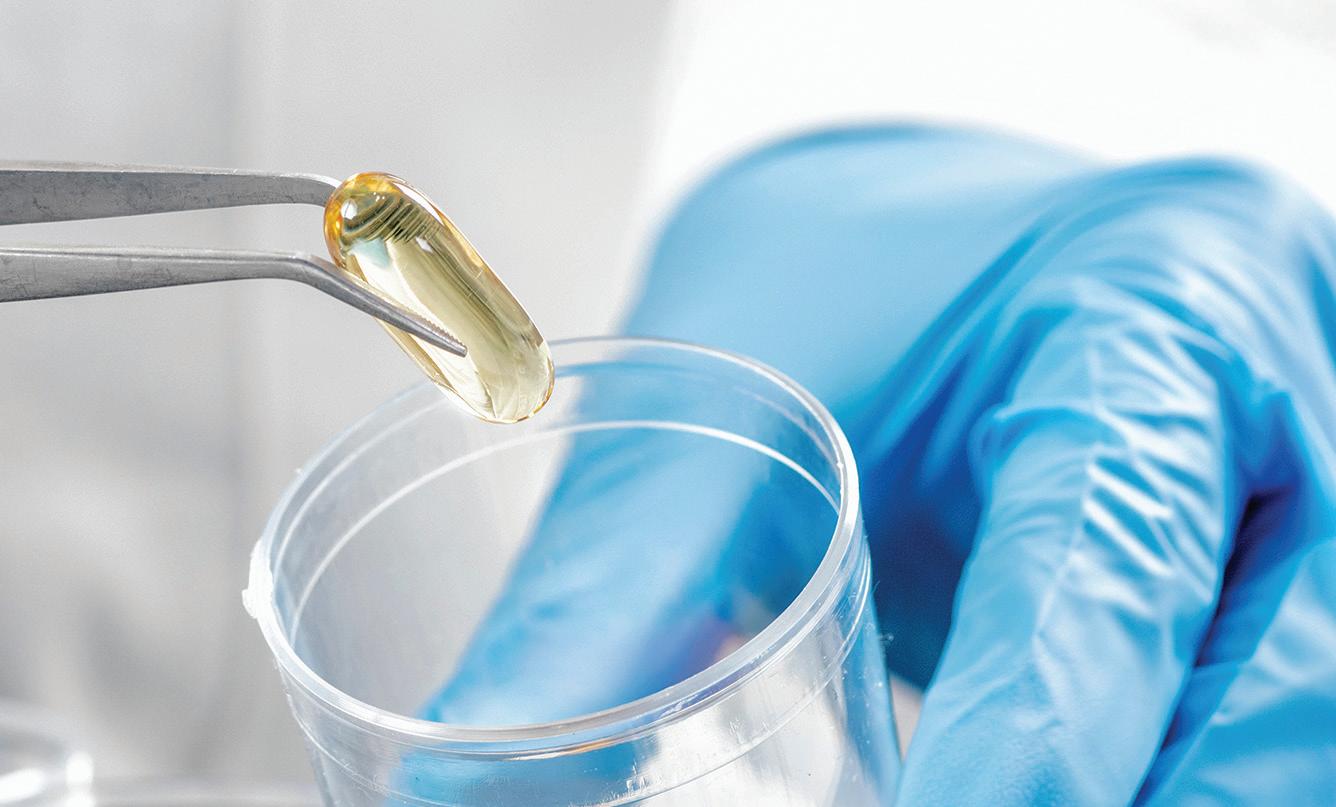
4 minute read
The Evolution of the PHARMACY TECHNICIAN Continues
BY BECKI FLEGEL, CPhT, Grand Haven Walmart Pharmacy, MPA Professional Affairs and Education Committee member, Western Michigan Pharmacy Association board member, MSPT board member
When I started my pharmacy journey more than 15 years ago, certifications and licenses were not required. If you didn't go to college, you had to rely on your fellow technicians and pharmacists for on-the-job training. Most techs in retail settings like Walmart, Meijer and Costco started out as team members in other departments. Transferring into the pharmacy just meant changing job titles and responsibilities. It can be a big leap to look at this as more than that for some technicians.
I decided to pay for a pharmacy technician course at Grand Rapids Community College. It was being taught by a pharmacist from the nearby children’s hospital. One of the many nuggets I gleaned from him was the pharmacist’s main responsibility is to patient safety and a technician’s main responsibility is to make sure the pharmacist has enough time to focus on this. That made me see this job as something more. I was a part of a team whose main focus was the patient and their health and well-being.
I wanted to learn more. I wanted to learn as much as I could to help the pharmacist protect our patients. My job had turned into a passion – then a career.
In today’s pharmacy, whether the setting is in retail, nuclear, laboratory, hospital or compounding, the amount of work a pharmacist has to do is ever increasing and the amount of pharmacists in the work force is ever decreasing. For the most part, this is due to higher numbers of retirement-aged pharmacists and the decreasing number of pharmacy school applicants.
Some pharmacists have even decided to lower their stress levels and leave pharmacy altogether.
As a result, pharmacy burnout is a very real daily struggle. Pharmacists are at a higher risk of low quality of life, high fatigue, burnout, and even, in rare cases, suicide. Even though Michigan pharmacies rate as one of the least distressed in the country, according to APhA’s Well Being Index, these factors still increase the risk of medication errors. That's where pharmacy technicians can step in.
In late 2020, the Pharmacy Technician Certification Board launched the CPhT-ADV credential. Certified Pharmacy Technicians can earn advanced credentials by completing at least four of their specialty-based certification programs. These courses include the following:
• Controlled Substance Diversion
• Hazardous Drug Management
• Immunization Administration
• Medication Therapy Management
• Non-sterile Compounding
• Sterile Compounding
• Point-of-Care Testing
• Regulatory Compliance
• Supply Chain and Inventory Management
• Technician Product Verification
• Billing and Reimbursement
Not only would the fully credentialed technician raise their standard of care and excellence, but, in the case of immunization administration alone, it has already eased the workload of the pharmacist considerably. This changes the workplace from a frenzied, stressful environment, to one of a more controlled, patient-centered mindset.
In 2022, Michigan increased the scope of practice for its technicians to include Technician Product Verification, or Visual Verify. Having a TPV-certified technician on staff frees up the pharmacist to focus on patient care and safety even further.
With the addition of more pharmacies employing off-site automated filling facilities for maintenance medications, the pharmacist’s role is constantly redefining itself. Recently, Gov. Gretchen Whitmer signed a bill that allows pharmacists to prescribe and dispense contraceptives and requires insurers to cover those contraceptives. For those patients who don’t have access, or can't afford to visit a primary care physician, these can be game-changers. Pharmacists will be in higher demand than ever, making a fully-trained technician working at the top of their license all the more valuable and necessary.
And with the introduction of pharmacointelligence, we can focus on educating patients and help form treatment plans with them, manage inventories more efficiently and maybe delve into the world of telemedicine. However, at this point, AI is not advanced enough to take the place of a welltrained technician. It could never replace the empathy and complex problem-solving skills that are performed on a regular basis, but it can certainly enhance the daily running of pharmacies in general.
With further training and support from pharmacists and pharmacy leaders, today’s technician can achieve so much more than they could just 15 years ago. We can be found outside of the workplace helping our communities, in the classrooms teaching future technicians, serving on association boards, committees, national organizations and even state pharmacy boards advocating for our fellow technicians. The future for pharmacy technicians in Michigan is constantly changing and improving, making our career one of the most exciting ones in health care today.








